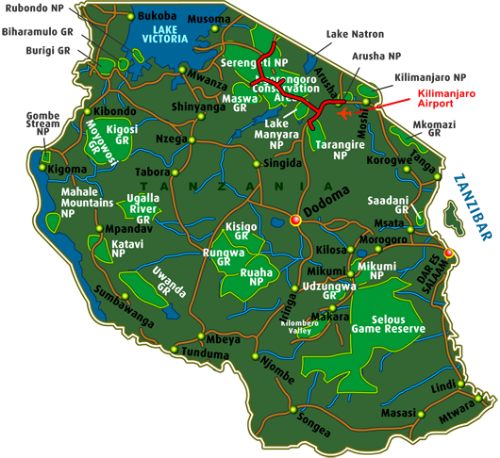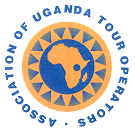Northern Circuit (7 days)
Our 7-day Africa wildlife safari brings you the best of Northern Tanzania and specifically includes the Ngorongoro Crater, Serengeti National Park and Tarangire National Park. This specific African safari and travel itinerary has been designed for visitors with more time on hand for a longer safari or travel tour. It offers you a comprehensive Tanzanian northern circuit holidays travel experience, while keeping your non game-viewing travel time to a minimum. This trip is also ideal for photographers.
Highlights
- Game drives (safaris) on the savannahs of Tarangire and Serengeti National Park with chances of seeing the wildlife from close quarters
- Very good chances of seeing the Big Five: Elephant, Rhino, Lion, Leopard and Buffalo
- The best large game viewing in the world on the endless savannah plains of the Serengeti, with the Big Migration, with over 2 million zebra’s and wildebeest
- One of the eight Wonders of the world, the Ngorongoro Crater with outstanding wildlife, including the endangered Black Rhino
- Meet the Local People like the Maasai and see their local way of living
Video
Route
Day to day program
Kilimanjaro Airport - Arusha
Arrive at Kilimanjaro International Airport. Pick up and then drive to Arusha Town, almost 45 min drive from the Airport to town for overnight.
Included: airport transfer
Arusha – Tarangire National Park
Pick up from your hotel and meet your guide, then take a short transfer to Arusha Town (45 minute drive) for a brief shopping around the town. Afterwards we proceed to the Tarangire National Park. Afternoon game drive in this beautiful national park, with chances of seeing lions, elephants, wildebeest, zebra and giraffe and many more.
Tarangire National Park stretches south east of Lake Manyara around the Tarangire River. It is most spectacular in the dry season from June to November, when several thousands of animals migrate to the last remaining pools of the Tarangire River.
Included: game drive
Tarangire National Park – Serengeti National Park (Ndutu area)
We drive through the Ngorongoro Highlands towards the Ngorongoro Conservation area, with spectacular Crater view, on the way to the endless plains of the Serengeti. On this day it is possible to visit a Maasai Boma (kraal) to get more familiar with their daily life activities (optional).
Serengeti is famous for the big migration and chances of seeing the big 5 and other game.
Serengeti National Park (Ndutu area) – Serengeti National Park (Seronera area)
Early morning game drive in Ndutu and transfer through the Serengeti to Seronera area which is in Central Serengeti, the heart of wild Africa, a massive wilderness of 14500 square km, where every day brings a new landscape and a new adventure.
Seronera has much water all year round, so many animals. Seronera is also home to a permanent population of hippos.
Included: game drive
Serengeti National Park (Seronera area) – Ngorongoro Conservation area
Early morning game drive in Seronera to catch up with the African wild sunrise with active animals in the morning, like lions, leopards and cheetahs Before we leave Seronera we can make a stop in the Serengeti Migration Centre and Olduvai Gorge (optional). Olduvai gorge is a famous and interesting place where our ancestors have been found. Transfer to the Ngorongoro Crater, game drive en route.
The Ngorongoro Crater is featuring one of the highest concentrations of game in Africa. Here you will witness an amazing spectacle of African wildlife, inside a self-contained world teeming with animals, with very good chances of seeing THE BIG FIVE.
Included: game drive
Ngorongoro Conservation area - Ngorongoro Crater - Arusha
Early morning adventure in the Ngorongoro Crater where there are high chances of seeing THE BIG FIVE.
The crater also includes a spectacular Soda lake with flamingos. Afternoon lunch at Hippo Pool Picnic site is an unforgettable experience.
In the afternoon we leave the crater and drive to Arusha.
Included: Ngorongoro Crater
Accommodations
Legend: BB = Bed and Breakfast / HB = Half Board / FB = Full Board
Prices 2024
Price on request, please send an email to mail@kazingatours.com
Includes
- Airport transfers
- Accommodations with meals mentioned
- Bottled dri nking water
- Private 4x4 custom built safari van with knowledgeable driver/guide and fuel
- Entrance fees to the included National Parks
- Activities mentioned as included
Excludes
- Flights
- Visa
- All optional activities
- Insurances
- Meals not mentioned and beverages
- Tips and personal expenses such as laundry and communication
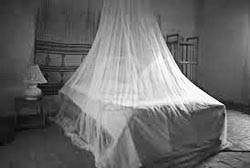 A certificate proving that you have received a yellow fever vaccination is obligatory. Furthermore all required inoculations must be recorded by your health practitioner on a valid vaccination certificate. You must carry this document with you throughout the tour. All visitors should take malaria prophylactic drugs. We also advise that you bring a mosquito repellent with you. Always consult your doctor or pharmacist for up to date requirements, inoculations and personal recommendations!
A certificate proving that you have received a yellow fever vaccination is obligatory. Furthermore all required inoculations must be recorded by your health practitioner on a valid vaccination certificate. You must carry this document with you throughout the tour. All visitors should take malaria prophylactic drugs. We also advise that you bring a mosquito repellent with you. Always consult your doctor or pharmacist for up to date requirements, inoculations and personal recommendations!
Normally you need the following vaccinations (but please always consult a doctor):
- Yellow Fever (you must have this can even be checked on arrival, especially when flying within East Africa)
- DTP
- Hepatitis
For Malaria you need to take tablets, Malarone or Lariam. Malarone is mostly used (please always consult a doctor).
Hygiene is not at the same standard as in your home country, so we advise you to bring a disinfectant cream with you. Always drink bottled water instead of tap water.
On arrival on the airport our guide will be there waiting for you. During safari we use custom made safari vehicles, custom made for an optimal view of the wildlife. Safari vehicles (and small aircrafts) provide limited space for luggage. It is therefore recommended to travel with light bags since bulky suitcases will overload and might be difficult to be taken on board.
Visa - for those who require one - can be purchased in advance through the Tanzanian embassy or consulate in your home country. Visa can also be obtained upon arrival at Kilimanjaro / Dar es Salaam International Airport or at any overland border. The price for a single entry visa is USD 50 per person.
It is your own responsibility to arrange your visa(s) correctly and in time, but if anything is unclear of course we will be glad to assist you.
Note: This information is subject to change! Always consult the Tanzanian embassy in your country if you are not sure.
In most of the cities it is possible to withdraw money from an ATM. Travelers Cheques are not widely accepted and it is very difficult or impossible to pay by credit card outside the cities. The US dollar is traditionally the hard currency of preference. We advise to bring some Dollars for daily expenses and tips.
Dollar bills should not be older than 10 years.
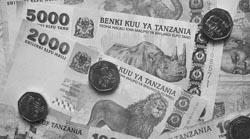
The unit of currency is the Tanzanian Shilling. Please check the latest exchange rates before you go to your destination. This will be a guideline. Please note you will get a better exchange rate in the bigger cities.
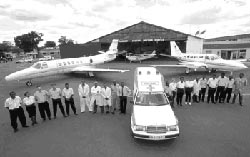
We advise you to apply for a Flying Doctors membership. The membership provides a quick and reliable air evacuation and medical care if needed.
AMREF Flying Doctors offers 2 covers (Annual and Short Term). You can choose between the Maisha Silver (Kenya, Tanzania and Zanzibar), Maisha Gold (Kenya, Tanzania, Zanzibar, Uganda, Rwanda and Burundi) or Maisha Platinum (Kenya, Tanzania, Zanzibar, Uganda, Rwanda, Burundi, South Sudan and Ethiopia).
Please check out the AMREF Flying Doctors website for more information and to become a member.
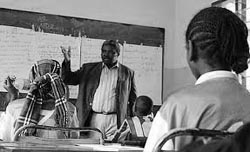 The national language of Tanzania is Kiswahili but English is widely spoken and is the main language in the tourist areas.
The national language of Tanzania is Kiswahili but English is widely spoken and is the main language in the tourist areas.
Tanzania is a tropical country, with high temperatures along the coast and at lower altitudes (especially in the Southern Part). The Northern part is at higher altitudes (except for Lake Natron and Tarangire).
Areas around the Ngorongoro Crater, Mt. Kilimanjaro, Mt. Meru and Arusha are generally cooler.
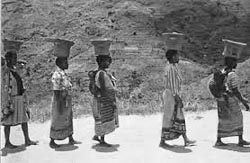
Daytime temperatures are generally warm to hot, so bring lots of light clothing. Evenings are cooler, especially at higher altitudes, so carry a couple of light sweaters too.
Those who intend to do mountain hiking will be exposed to alpine temperatures and should pack accordingly.
Don’t forget to bring a hat, sunglasses and a waterproof jacket. During safaris we advise to avoid black and dark blue clothes (because they can attract tsetse flies). For hiking and walking safaris Solid walking shoes and sturdy clothing are ideal for forest walks.
If you are planning on doing a community walk or visit the local people, we advise you to wear appropriate clothing. For example women putting on long skirts and a top that covers the shoulders.
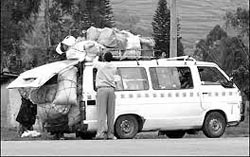 A valid passport is mandatory (passport must be valid for at least 3 months after re-entry) and visa requirements for all countries you are planning to visit should be checked before you travel.
A valid passport is mandatory (passport must be valid for at least 3 months after re-entry) and visa requirements for all countries you are planning to visit should be checked before you travel.
To make the most of your visit to the game reserves and national parks, we advise you to carry binoculars and field guides.
Photographers will need a zoom lens for wildlife (70-300 or more). Please make sure to carry enough memory cards with you. Toiletries and other essentials can be bought in the cities.
A torch (flashlight) can proof to be very useful
We advise you to take an international adapter with you for your electric equipment. The system used in Tanzania is the British system. In most lodges it is possible to charge your batteries.
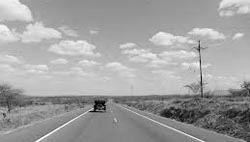 Driving in Tanzania is on the left-hand side.
Driving in Tanzania is on the left-hand side.
Visitors without experience of African roads are advised to travel with a 4x4 vehicle driven by a knowledgeable driver/guide, rather than self-drive.
All our guides are well trained in "Defensive Driving".
Please mind that washrooms along the road are sometimes not to European standards, for example squatting toilets, no flushing toilets or no toilet paper available. Like the locals say: T.I.A. This Is Africa.
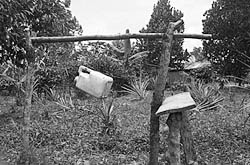 Bathroom facilities and accommodations can be more basic when traveling on a medium to low budget. In the eco lodges mind that the water reserves are limited and in most cases there are no sockets in the room, but you can always charge your devices at the reception.
Bathroom facilities and accommodations can be more basic when traveling on a medium to low budget. In the eco lodges mind that the water reserves are limited and in most cases there are no sockets in the room, but you can always charge your devices at the reception.
 Tipping will always be appreciated. It is normal to tip 5-10% in hotels and restaurants. Guides, drivers and carriers should always be tipped. Indication: for carriers USD 1-3 and for your driver/guide USD 5-15 per day, depending on the group size, number of days and your satisfaction.
Tipping will always be appreciated. It is normal to tip 5-10% in hotels and restaurants. Guides, drivers and carriers should always be tipped. Indication: for carriers USD 1-3 and for your driver/guide USD 5-15 per day, depending on the group size, number of days and your satisfaction.
The Lonely Planet and Bradt Travel Guide are the most detailed guidebooks for Tanzania. For wildlife, the best guidebook is ‘Watching Wildlife East Africa’ from the Lonely Planet and The Bradt ‘East African Wildlife’. For birding, the best guidebook is ‘birds of East Africa’. It is advisable to get the most updated copy.

